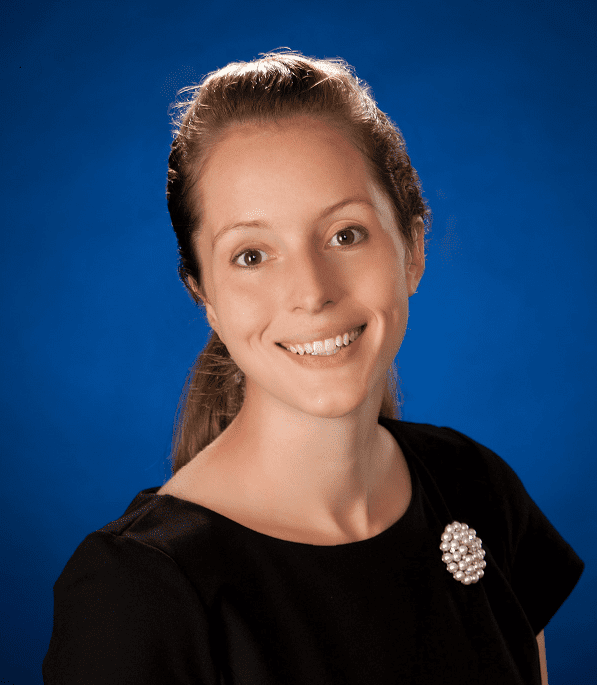When it comes to growing sugarcane in Glades County, Florida, it’s all about roots, resilience, and faith.
“The weather is one of the biggest challenges of farming here in south Florida where hurricanes and excessive rainfall can knock down, or ‘lodge,’ a 14-foot-tall sugarcane crop,” said Ardis Hammock, who owns and operates Frierson Farms with her husband Alan and son Robert. “There are always blessings, though. Last time that happened, God sent sunshine every day. After a storm, the cane will grow toward the sun as the land dries. It won’t return to its original height but will rise enough to be successfully harvested by our equipment. As long as the plants don’t get uprooted, they will be okay.”
Frierson Farms began in 1918 when Ed Frierson, Alan Hammock’s uncle, left Fort Myers and arrived in Glades County. “Mr. Ed” put down roots on the southwest shore of Lake Okeechobee when he purchased 30 acres of land halfway between Clewiston and More Haven.
“The state was a swamp back then and the land had to be ditched and drained in order to live and farm there,” Ardis said. “Mr. Ed looked for custard apple trees because local wisdom was that custard apple trees grew on warm, fertile land. Freezes actually do happen in Florida but areas where those trees grew were not as prone to frost.”
In addition to owning and operating a dry goods store, Mr. Ed began raising cattle and growing vegetables.
“The soil around Lake Okeechobee was filled with sand and organic material, and provided ideal conditions for vegetables and sugarcane,” said Ardis. “Today this region is the winter vegetable capital of the U.S. and provides the eastern seaboard with the majority of their veggies, including corn, cabbage, radishes, green beans, and specialty lettuce mixes.”
Ed and his first wife Ruth weathered many storms together, including The Great Miami Hurricane of 1926 that destroyed their home and took the lives of 372 people. The couple rebuilt, only to be hit by the Okeechobee Hurricane in 1928.
“That hurricane was even worse,” Ardis said. “Ed and Ruth took refuge in the second story of their barn and saw people floating by. They were able to save some by catching them and getting them into the barn, but others they couldn’t.”
At that time there was no levee around Lake Okeechobee, resulting in frequent flooding. Flooded conditions prevented the burial of hurricane victims, so their bodies were shipped by rail to a town further west for interment.
A few years later in 1931, American industrialist Charles Stewart Mott purchased a failed sugarcane farming and processing company in Clewiston. Mott became its chairman and renamed the new business “United States Sugar Corporation.” Today U.S. Sugar is one of the country’s most successful agribusiness operations.
“In 1938, U.S. Sugar needed more cane in the mill, so they asked area farmers to produce the crop,” said Ardis. “That was the year Ed and Ruth started growing sugarcane.”
The Friersons’ cane crops were delivered to the mill on railroad cars, a practice which continues to this day.
“Our farm is located seven miles from the mill, and there are other farms 50 or more miles away. Rail cars are the most efficient mode of transport and can get the sugarcane to the mill within 8 hours of harvesting,” she said. “Cane is only delivered to U.S. Sugar by rail and the refinery is adjacent to the mill.”
Sadly, Ruth passed away in 1962. Mr. Ed married Alan Hammock’s aunt Vee in 1963. Neither Mr. Ed nor Vee had children of their own. However, Alan grew up around the couple. Mr. Ed told Alan to attend college and then come back and be part of the farm. Mr. Ed passed away in 1973, the same year Alan began working at Frierson Farms. Ardis and Alan met while attending high school in Clewiston and were married in 1976.
Ardis grew up in a farming family in the Clewiston area and fondly remembers time spent with her father, Joe Hall.
“Dad was from Kentucky. He was a World War II veteran who had fought in the Battle of the Bulge and came to Clewiston after the war,” said Ardis. “He bought an acreage and grew some of the first zoysia grass for golf courses. He and my mother, also named Ardis, went on to grow cattle and sugarcane.”
Joe believed that if a boy could do a job, a girl could do it, too.
“I grew up in a neighborhood of boys. Dad taught me never to say ‘can’t,’ and how to stand up for myself. He unfailingly defended me when I did,” Ardis said. “That has carried through for me when advocating for myself and other farmers.”
Ardis is the spokeswoman of the Florida Sugarcane Farmers and a past member of USDA’s Agriculture Trade Advisory Committee for Sugar. She assisted American Farm Bureau in developing a hurricane crop insurance policy, served as County Committee Chairperson for Glades/Hendry County Farm Service Agency, and sat on the Foreign Ag Service Sweetener Advisory Committee for ten years. Ardis has also testified on behalf of sugarcane farmers before the House Ag Committee in Orlando and traveled to Washington, DC, many times to speak on behalf of farmers. She is a member of the American Farm Bureau Policy Committee and the Florida Farm Bureau Budget and Economy committee. As president of the South Florida Ag Foundation, she brings congressional staffers to Florida twice a year to educate them on the array of farming in the Glades.
Ardis was also a member of “Ladies of the Lake,” an advocacy group formed by Alan’s aunt, Vee Frierson, over 30 years ago. This was the beginning of her advocacy for farmers in the Glades.
“Ladies of the Lake were the spokeswomen group of the sugarcane industry. We once spent 13 weeks traveling the state of Florida speaking out against amendments harmful to the sugar industry. We lobbied at the capital in Tallahassee and in D.C.,” said Ardis. “Although most of those women have passed away, the legacy they created for the next generation lives on.”
Ardis continued her advocacy 14 years ago when appealing a Farm Service Agency (FSA) decision with 22 other sugarcane growers.
“I learned as much as I could and began working as a paralegal for the lawyer who handled that appeal process,” she said. “I have been working with him ever since and we have helped many other farmers understand and navigate the appeals processes for various government programs.”
The Hammocks’ son Robert and daughter Sarah are continuing the family farming tradition alongside their parents in Florida.
“Robert and his wife Ashley have two young sons, Case and Drake, and a daughter, Avery,” said Ardis. “Our daughter Sarah is CEO of an herb and vegetable operation called C&B Farm, and her husband Pedro works for U.S. Sugar. We protect the environment so the land and water will remain productive and viable for generations to come.”
As part of looking to the future, Frierson Farms has implemented Best Management Practices (BMPs) for the past 28 years. These guidelines developed through the University of Florida advise producers on how to manage the water, nutrients, and inputs they use to reduce impact on the state’s natural resources.
“We use laser leveling in our sugarcane fields to minimize soil erosion and adhere to the nutrient and irrigation management practices,” Ardis said. “We also participate in the Everglades Agricultural Area Environmental Protection self-taxing district to address water quality standards. This money is used to develop and maintain sustainability.”
The use of rice as a cover crop is also a prime example of successful sustainability practices in the Everglades Agricultural Area (EAA), according to Ardis.
“About 30,000 acres of rice are grown in the EAA,” she said. “The water and rice in combination control wireworms, which harm sugarcane, and eliminate the need for insecticides when planting sugarcane.”
The resilience and faith of farmers are key to the success of American agriculture and sustainability, according to Ardis.
“My husband Alan is the most upbeat, optimistic person I know. Even during the worse freezes, I’ve never seen him lose hope,” she said. “This is representative of the whole American sugar industry. Despite the battles and the pressures, we’re always ready for the next crop. We’re never down and out, and we’re never done.”
Ardis’s advice for new farmers is to learn the history and stories of the sugar industry.
“It’s important to know where you came from so you can know where you’re going and to ‘grow through what you go through.’ God reveals Himself to us both as farmers and as an industry in challenging situations and the ‘hurricanes’ of life,” she said. “There have been hard experiences, such as when I had a brain tumor 18 years ago, and in 2005 when Hurricane Wilma took the roof off the house and flattened the cane. God brought us through it because He doesn’t give us what we can handle. He handles what we are given.”





Get Social with #MoreToSugar